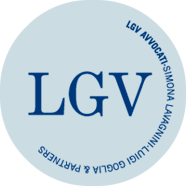LE OPERE DEL DESIGN SONO TUTELATE SOLO A CONDIZIONE CHE SIANO CREATIVE
23/09/2019
La Corte di Giustizia europea chiarisce che la tutela di diritto d’autore alle opere di design è condizionata unicamente al ricorrere del requisito della creatività, non essendo in linea con l’ordinamento comunitario la richiesta di requisiti ulteriori, quali l’esistenza di uno specifico valore estetico o artistico
La vicenda
La vicenda processuale vede contrapporsi le società Cofemel e G-Star, entrambe attive nel settore dell’abbigliamento. La controversia, giunta dinanzi al Supremo Tribunal de Justiça portoghese, riguarda i diritti d’autore rivendicati da G-Star su alcuni modelli, i quali sarebbero stati violati da Cofemel con la produzione e commercializzazione di alcuni capi di abbigliamento.
Il contesto all’origine del rinvio pregiudiziale
Il rinvio pregiudiziale alla Corte di Giustizia europea effettuato dalla suprema corte portoghese prende le mosse dalla circostanza per cui il Código do Direitos de Autor e dos Direitos Conexos – codice portoghese del diritto d’autore e diritti connessi – da un lato, include il design nell’elenco delle opere che possono godere di protezione ai sensi del diritto d’autore, dall’altro non precisa esplicitamente quali requisiti devono essere soddisfatti affinché determinati oggetti, che perseguono un fine utilitario, godano effettivamente di detta protezione.
Il quesito
Poiché dottrina e giurisprudenza portoghesi risultavano divise sul punto, il Supremo Tribunal de Justiça ha chiesto ai giudici di Lussemburgo se occorra considerare, alla luce dell’interpretazione della direttiva 2001/29 accolta dalla Corte nelle sentenza del 16 luglio 2009, Infopaq International (C‑5/08, EU:C:2009:465), e del 1º dicembre 2011, Painer (C‑145/10, EU:C:2011:798), che le opere del design godono della tutela assicurata dal diritto d’autore allo stesso titolo di qualsiasi opera letteraria e artistica, e pertanto a condizione che siano originali, nel senso che sono il risultato di una creazione intellettuale propria del loro autore, o se sia possibile subordinare la concessione di detta tutela all’esistenza di uno specifico livello di valore estetico o artistico.
La soluzione della CGUE
La Corte ha affermato che l’articolo 2, lettera a), della direttiva 2001/29 va interpretato nel senso che non è conforme al diritto comunitario una normativa nazionale che condizioni il riconoscimento di una tutela ai sensi del diritto d’autore a opere di design come modelli di capi di abbigliamento, al ricorrere di un requisito ulteriore rispetto a quello della creatività, ed in particolare che essi debbano produrre un effetto visivo loro proprio e rilevante da un punto di vista estetico.
La Corte è giunta a questa conclusione partendo dal presupposto che le fonti normative europee consentono che la protezione attribuita a disegni e modelli possa cumularsi con la tutela di diritto d’autore. Tuttavia, perseguendo ciascuna obiettivi diversi, queste protezioni sono assoggettate a discipline diverse.
La Corte ha quindi chiarito che l’effetto estetico che può essere prodotto da un disegno o modello non costituisce un elemento rilevante per determinare se tale disegno o modello possa essere qualificato come «opera dell’ingegno», giacché un tale effetto estetico costituisce il risultato della sensazione intrinsecamente soggettiva di bellezza che prova ciascuna persona che si trova ad osservare il disegno o modello in questione.
La tutela ricorre quindi quando l’oggetto costituisce una “creazione intellettuale” che riflette la libertà di scelta e la personalità dell’autore; e si appunta sugli elementi che sono espressione di tale creazione.
